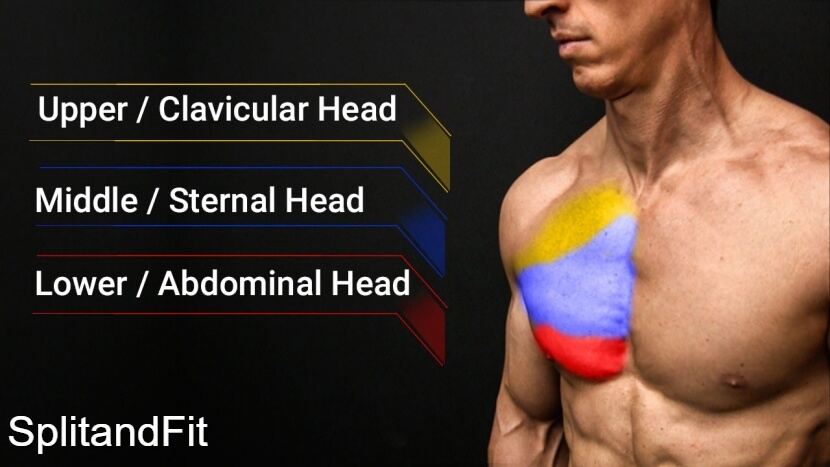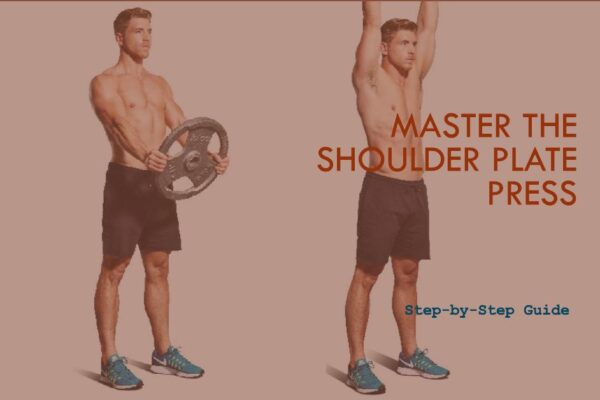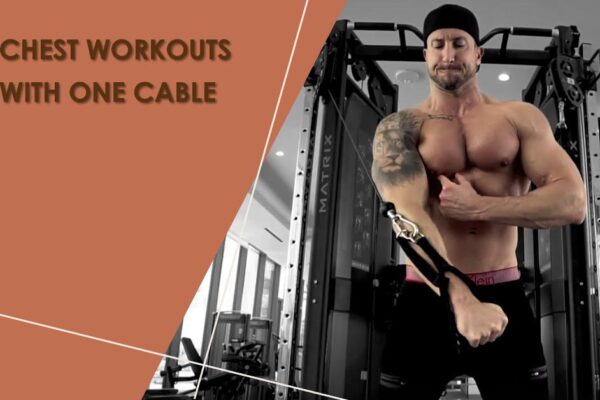Incorporating resistance bands into your workout can significantly enhance chest muscle strength and flexibility without the need for heavy gym equipment. Resistance bands are adaptable, easy to use, and ideal for all fitness levels. The “Best Chest Exercises with Resistance Bands” include a variety of moves like presses, flyes, pullovers, and push-ups, utilizing the unique resistance of bands for effective muscle engagement. These exercises are perfect for anyone looking to build a stronger, more toned chest with minimal equipment, whether at home or on the go.
Can You Get a Good Chest Workout From Resistance Bands?
Yes, you can get a good chest workout from resistance bands. They provide constant tension throughout exercises, effectively targeting and engaging chest muscles. Resistance bands are versatile, allowing for a broad range of movements that can mimic traditional weightlifting exercises. Additionally, they’re great for enhancing muscle activation and ensuring progressive resistance as your strength improves.
Chest Muscles Targeted by Resistance Bands Workouts
- Pectoralis Major: The largest chest muscle, responsible for moving the shoulder and arm. Key exercises include banded bench presses and push-ups with resistance bands.
- Pectoralis Minor: A smaller muscle under the pectoralis major, aiding in scapular movement. Targeted with resistance band flyes and crossovers.
- Serratus Anterior: Located on the side of the chest, important for shoulder movement. Engaged through straight-arm pulldowns and staggered stance presses with a band.
These are the primary chest muscles worked during resistance band exercises, ensuring a comprehensive upper-body workout.

Benefits of Training the Chest with Resistance Bands
- Increased Muscle Activation: Resistance bands provide constant tension throughout exercises, leading to greater muscle activation and growth.
- Enhanced Safety: Using bands reduces the risk of injury compared to heavy weights, making it safer for joints and muscles.
- Versatility: Bands allow for a wide range of exercises, targeting different parts of the chest and accommodating all fitness levels.
- Portable Workouts: Lightweight and compact, resistance bands enable effective chest workouts anywhere, anytime.
- Progressive Resistance: The tension from bands increases with extension, offering progressive resistance that can adapt to your strength gains.
Best Chest Exercises With Resistance Bands?
Here are 8 effective chest exercises using resistance bands that can help enhance your workout routine:
- Banded Floor Press
- Resistance Band Fly
- Resistance Band Push-up
- Straight-Arm Pulldown
- Wrap-around Press
- Upper Chest Pullover
- Prone Punch-out
- Band-assisted Dip
These exercises provide a comprehensive approach to chest training with resistance bands, offering variety, scalability, and effectiveness for users at all fitness levels.

1. Banded Floor Press
The Banded Floor Press is an effective chest exercise that utilizes resistance bands to target the pectoral muscles, shoulders, and triceps. This exercise is a variation of the traditional bench press but performed on the floor, which can help reduce strain on the shoulders and focus more on the chest muscles.
How to perform:
- Setup: Lie on the floor with your knees bent and feet flat. Place a resistance band under your upper back, ensuring it’s centered and secure.
- Grip: Grab the ends of the band with both hands. Your palms should be facing away from you, similar to a bench press grip.
- Starting Position: With your hands holding the band, position your arms so that your elbows are bent and resting on the floor at about a 45-degree angle from your body.
- Pressing: Press your hands towards the ceiling, extending your arms fully. Keep your wrists straight and palms facing away.
- Return: Slowly lower your hands back down to the starting position, allowing your elbows to gently touch the floor.
Tips:
- Band Tension: Choose a band with appropriate resistance. It should offer enough tension at the top of the movement but not be so tight that you can’t complete the press motion.
- Elbow Position: Keep your elbows at a 45-degree angle from your body to maximize chest engagement and reduce shoulder strain.
- Controlled Movements: Perform each rep with control, focusing on the contraction of your chest muscles and avoiding any jerky movements.
- Breathing: Exhale as you press up and inhale as you return to the starting position. Proper breathing helps maintain stability and power through the exercise.
- Progression: To increase difficulty, you can use a thicker band for more resistance or increase the number of repetitions and sets.
2. Resistance Band Fly
The Resistance Band Fly is a pivotal exercise aimed at isolating and strengthening the chest muscles, particularly focusing on the pectorals. Unlike pressing movements, flies emphasize horizontal adduction of the shoulder joint, engaging the chest fibers without significant tricep involvement. This exercise is excellent for sculpting and defining the chest.
How to perform:
- Anchor Point: Secure the resistance band at chest level behind you. You can use a door anchor or wrap it around a sturdy object.
- Positioning: Stand with your back to the anchor point, feet shoulder-width apart for stability. Grasp the ends of the band with your palms facing forward and arms extended out to the sides, slightly bent at the elbows.
- Movement: Keeping a slight bend in your elbows, bring your hands together in front of you in a wide arc. Squeeze your chest muscles as your hands meet.
- Return: Slowly reverse the motion, returning your arms to the starting position in a controlled manner, feeling a stretch in your chest.
- Repetition: Perform the desired number of repetitions, maintaining form and control throughout the exercise.
Tips:
- Stance Stability: Ensure your stance is stable throughout the exercise. Slightly bend your knees and engage your core to maintain balance.
- Elbow Bend: Maintain a consistent, slight bend in your elbows throughout the movement to protect your joints and target the chest effectively.
- Mind-Muscle Connection: Focus on squeezing your chest muscles as you bring your arms together, enhancing muscle activation and effectiveness.
- Controlled Tempo: Execute the movement with a slow, controlled tempo, especially when returning to the starting position to maximize tension on the chest.
- Adjust Resistance: To increase or decrease the difficulty, step further from or closer to the anchor point, respectively, or use bands of different thicknesses.
3. Resistance Band Push-up
The Resistance Band Push-up is a dynamic exercise that amplifies the traditional push-up by adding resistance, increasing the challenge, and further engaging the chest, shoulders, triceps, and core. This variation not only enhances muscle activation but also promotes strength and endurance gains in the upper body.
How to perform:
- Band Placement: Place the resistance band across your upper back and under your arms, holding it in place with your hands as you get into the push-up position.
- Starting Position: Assume a high plank position with your hands slightly wider than shoulder-width apart on the floor, body in a straight line from head to heels.
- Descent: Lower your body towards the floor by bending your elbows, keeping your body straight and core engaged.
- Push-up: Press through your hands to lift your body back up to the starting position, extending your arms fully while the band provides added resistance.
- Repetition: Perform the desired number of repetitions, maintaining proper form throughout the set.
Tips:
- Band Tension: Ensure the resistance band provides enough tension to challenge you but not so much that it compromises your form or range of motion.
- Elbow Angle: Keep your elbows at a 45-degree angle to your body during the push-up to reduce stress on the shoulders and increase chest engagement.
- Core Engagement: Actively engage your core throughout the exercise to maintain a straight body line and prevent sagging or piking of the hips.
- Hand Position: Adjust your hand position wider or narrower to target different parts of the chest and triceps.
- Progression and Regression: To increase the challenge, use a thicker band or elevate your feet. For beginners, performing the push-ups on your knees while still using the band can help build strength.
4. Straight-Arm Pulldown
The Straight-Arm Pulldown is a resistance band exercise that primarily targets the lats (latissimus dorsi) but also engages the chest, shoulders, and core. It’s an effective movement for improving upper body strength and definition, mimicking the cable machine pulldown but with the versatility of bands.
How to perform:
- Anchor Point: Secure the resistance band overhead to a stable anchor point. The higher, the better to mimic the pulldown motion.
- Starting Position: Stand facing the anchor point, feet shoulder-width apart. Grasp the band with both hands, arms extended straight above your head.
- Execution: Keeping your arms straight, pulling the band down towards your thighs, engaging your lats, and keeping your core tight.
- Return: Slowly raise your arms back to the starting position, maintaining tension in the band and control over the movement.
- Repetition: Continue for the desired number of repetitions, focusing on the quality of each rep.
Tips:
- Posture: Keep your back straight and chest up throughout the exercise to ensure proper engagement of the target muscles.
- Arm Position: Ensure your arms remain straight during the exercise to effectively target the lats and minimize involvement of the biceps.
- Core Engagement: Tighten your abdominals throughout the movement to stabilize your body and enhance the effectiveness of the exercise.
- Adjust Tension: Step forward or backward to adjust the tension on the band. More tension increases the difficulty of the pulldown.
- Controlled Movement: Focus on a slow and controlled motion, especially when returning to the starting position, to maintain muscle engagement and prevent injury.
5. Wrap-around Press
The Wrap-around Press is a versatile resistance band exercise that targets the chest muscles, simulating a bench press motion. This exercise can be performed almost anywhere and is excellent for building strength and muscle in the chest without needing heavy weights.
How to perform:
- Positioning: Stand up straight with your feet shoulder-width apart. Wrap the resistance band behind your back, just below the shoulder blades.
- Grip: Hold the ends of the band with both hands. Your palms should face down, and your hands should be at chest level.
- Pressing: Extend your arms forward, pushing against the resistance of the band, until your arms are fully extended in front of you.
- Return: Slowly return to the starting position by bending your arms and bringing your hands back to chest level.
- Repetition: Perform the desired number of repetitions, maintaining proper form throughout the exercise.
Tips:
- Stance Stability: Keep a stable stance throughout the exercise to ensure focus remains on the chest muscles.
- Elbow Position: Keep your elbows slightly bent during the extension to avoid unnecessary strain on your joints.
- Controlled Movement: Ensure that each movement is controlled, especially when returning to the starting position to maximize muscle engagement.
- Band Tension: Adjust the tension of the band by using bands of different thicknesses or by changing your grip width. More tension increases the difficulty.
- Breathing: Breathe out as you press forward and breathe in as you return to the starting position. Proper breathing helps maintain rhythm and stability.
6. Upper Chest Pullover
The Upper Chest Pullover with a resistance band is an effective exercise targeting the upper chest, lats, and serratus anterior muscles. It’s an excellent addition to any upper-body workout routine, focusing on stretching and strengthening these areas for improved muscle definition and posture.
How to perform:
- Anchor Point: Secure the resistance band to a low anchor point, near the floor.
- Starting Position: Lie on your back with your head toward the anchor point, grabbing the band with both hands. Extend your arms over your chest, keeping a slight bend in your elbows.
- Execution: Keeping your arms straight, pull the band over and past your head towards the floor, stretching your chest and engaging your upper chest muscles.
- Return: Slowly bring your arms back to the starting position, maintaining tension on the band throughout the movement.
- Repetition: Perform the desired number of repetitions, focusing on controlled movements and proper form.
Tips:
- Grip: Hold the band with an overhand grip, and ensure it’s securely in your hands throughout the exercise to avoid slipping.
- Elbow Bend: Maintain a slight bend in your elbows to prevent strain on your joints and to keep the focus on your chest and lats.
- Controlled Movement: Execute the exercise with slow, controlled movements to maximize muscle engagement and minimize the risk of injury.
- Breathing: Inhale as you lower the band over your head, and exhale as you return to the starting position. Proper breathing aids in muscle activation and stability.
- Adjust Resistance: To increase or decrease the difficulty, move closer to or farther from the anchor point, respectively, or use bands of different thicknesses.
7. Prone Punch-out
The Prone Punch-out is a resistance band exercise that focuses on strengthening the shoulder muscles, particularly the anterior deltoids, while also engaging the core and stabilizing muscles throughout the upper body. This exercise is performed in a prone (face down) position, adding a unique challenge to your workout routine.
How to perform:
- Setup: Secure the resistance band to a low anchor point. Lie face down on the floor, with your head towards the anchor, grasping the ends of the band with both hands.
- Starting Position: Extend your arms in front of you, ensuring there’s tension in the band. Your palms should be facing each other.
- Execution: Keeping your head neutral and looking down, punch your arms forward as far as possible, extending fully and increasing the tension on the band.
- Return: Slowly retract your arms back to the starting position, maintaining control and keeping tension in the band.
- Repetition: Perform the desired number of repetitions, focusing on smooth, controlled movements.
Tips:
- Neutral Spine: Keep your spine in a neutral position by looking directly down at the floor, which helps prevent neck strain.
- Engage Core: Activate your core muscles throughout the exercise to stabilize your body and support your spine.
- Controlled Movements: Ensure each movement is deliberate and controlled, especially when returning to the starting position to maximize muscle engagement.
- Adjust Tension: To increase or decrease the difficulty, move closer to or farther from the anchor point, respectively, or use bands of different thicknesses.
- Breathing: Breathe out as you punch forward and breathe in as you return to the starting position. Proper breathing technique supports effective muscle activation and performance.
8. Band-assisted Dip
The Resistance Band-assisted Dip is an excellent exercise for beginners or those looking to improve their upper body strength, specifically targeting the triceps, chest, and shoulders. By using a resistance band for assistance, this exercise becomes more accessible, allowing for proper form and full range of motion until strength is built up.
How to perform:
- Setup: Securely loop a resistance band around the bars of a dip station. The band should be stretched between the two bars.
- Positioning: Place your knees or feet (for more assistance) on the band, and grip the bars with your hands shoulder-width apart.
- Descent: Slowly lower your body by bending your elbows until they are at about a 90-degree angle, keeping your elbows close to your body.
- Lift: Press down into the bars, extending your arms to lift your body back up to the starting position.
- Repetition: Perform the desired number of repetitions, maintaining smooth and controlled movements throughout.
Tips:
- Elbow Position: Keep your elbows pointed backward and close to your body to ensure proper engagement of the triceps and to reduce strain on the shoulders.
- Body Position: Maintain a slight forward lean throughout the exercise to better target the chest muscles along with the triceps.
- Core Engagement: Tighten your core during the dips to stabilize your body and prevent unnecessary swinging or movement.
- Adjust Assistance: Use bands of different thicknesses to adjust the level of assistance. Thicker bands will provide more assistance, making the exercise easier.
- Breathing: Inhale as you lower your body and exhale as you press upwards. Proper breathing helps with muscle activation and maintaining control during the exercise.
Safety Considerations For Resistance Band Chest Workouts
- Check for Damage: Always inspect your resistance bands for signs of wear, tear, or damage before starting your workout to prevent them from snapping.
- Secure Anchor Points: Ensure that the band is securely anchored to a stable object or surface to prevent it from coming loose and causing injury.
- Proper Form: Maintain correct form and posture during exercises to avoid strain or injury to your muscles and joints.
- Controlled Movements: Perform exercises with controlled movements to prevent the band from snapping back quickly, which could lead to injury.
- Use Appropriate Resistance: Start with a resistance level suitable for your fitness level to avoid overexertion and gradually increase as you become stronger.
- Wear Proper Footwear: To prevent slipping, especially in standing exercises, wear shoes with good grip.
Frequent Question Answers
| Question | Answer |
|---|---|
| Can resistance bands build chest? | Yes, resistance bands can effectively build chest muscles by providing constant tension, enabling muscle activation and growth. |
| What is the number 1 chest exercise? | The number 1 chest exercise with resistance bands is often considered to be the banded bench press, due to its effectiveness in targeting the pectoral muscles. |
| How do you target your upper chest with resistance bands? | To target the upper chest with resistance bands, perform exercises like incline band presses or upper chest pullovers, with the band anchored below you to create an upward angle. |
| Can you do chest flys with bands? | Yes, you can perform chest flys with resistance bands by anchoring the band behind you and bringing your hands together in front of your chest, maintaining a slight bend in the elbows. |
| How do I get a full chest? | To achieve a full chest, incorporate a variety of resistance band exercises that target all areas of the chest, including presses, flys, and pullovers, to stimulate muscle growth evenly. |
| How to build a big chest? | Building a big chest with resistance bands involves consistent training, focusing on progressive overload, and incorporating a mix of compound and isolation exercises to target all chest areas. |
| How do you activate chest with resistance bands? | Activate the chest muscles with resistance bands by ensuring proper form, focusing on squeezing the chest at the peak of each movement, and using a range of exercises to target different chest parts. |
| Do ring pushups work upper chest? | While not directly related to resistance bands, ring pushups can work the upper chest by adjusting the rings higher, which requires more engagement from the upper pectoral muscles. |
| How can I target my upper chest? | Target your upper chest with resistance bands by performing exercises like inclined presses or overhead pullovers, focusing on the upper chest area and ensuring the band’s resistance challenges this part. |
Conclusion
Resistance bands offer a versatile and effective means for building chest strength and muscle. The best chest exercises with resistance bands include a variety of movements that target different parts of the chest for comprehensive development. Key exercises such as the banded bench press, floor press, flyes, pullovers, dips, incline press, and variations of the push-up are highly recommended.
These exercises not only engage the chest muscles thoroughly but also provide options for all fitness levels, ensuring safety and adaptability. Incorporating these resistance band exercises into your workout routine can lead to significant improvements in chest size, strength, and overall upper body aesthetics.






Leave a Reply